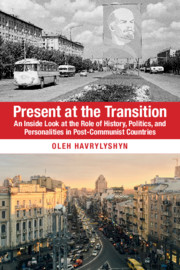 Present at the Transition
Present at the Transition Book contents
- Present at the Transition
- Present at the Transition
- Copyright page
- Dedication
- Contents
- Figures
- Tables
- Preface
- Acknowledgments
- Abbreviations
- Introduction
- Part I The Diverse Paths Taken in Transition
- Part II Choice of Strategy
- Part III Domestic Vested Interests and Reforms
- 7 The Old Guard
- 8 Formation of the Oligarchs
- 9 Corruption
- 10 Role of the Old Imperial Center
- Part IV Outcomes and Prospects
- Bibliography
- Index
8 - Formation of the Oligarchs
from Part III - Domestic Vested Interests and Reforms
Published online by Cambridge University Press: 04 May 2020
- Present at the Transition
- Present at the Transition
- Copyright page
- Dedication
- Contents
- Figures
- Tables
- Preface
- Acknowledgments
- Abbreviations
- Introduction
- Part I The Diverse Paths Taken in Transition
- Part II Choice of Strategy
- Part III Domestic Vested Interests and Reforms
- 7 The Old Guard
- 8 Formation of the Oligarchs
- 9 Corruption
- 10 Role of the Old Imperial Center
- Part IV Outcomes and Prospects
- Bibliography
- Index
Summary
The phenomenon of post-soviet oligarchs in Russia, Ukraine, and others is so well-known it needs little definition; however, how exactly it came about and how this was related to economic reforms is often misunderstood – this chapter relies on extensive earlier studies to summarize the main explanations. Littler-known is the embryonic start of most oligarchs under the partial reforms of Gorbachev, allowing for the first time private enterprise with the 1997–1998 Laws on Cooperatives. With no market liberalization for prices or foreign trade, these new companies could only prosper by using insider connections to intermediate between state firms and thus skim off profits and assets. The cleverest and best-connected rapidly accumulated hordes of cash and established pocket-banks, preparing for future open privatization of state firms. The notorious episode of Loans-for-Shares in Russia may not have been the largest part of actual privatization, but illustrates well the nontransparent quasi-legal “stealing” of state assets that the population saw this to be, and due to this believed that market reforms in general were bad for the people. The reality that this could only happen because reforms were very partial did not change such perceptions, even to the present day.
- Type
- Chapter
- Information
- Present at the TransitionAn Inside Look at the Role of History, Politics, and Personalities in Post-Communist Countries, pp. 181 - 212Publisher: Cambridge University PressPrint publication year: 2020
